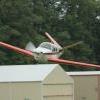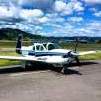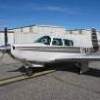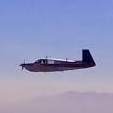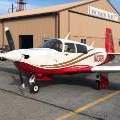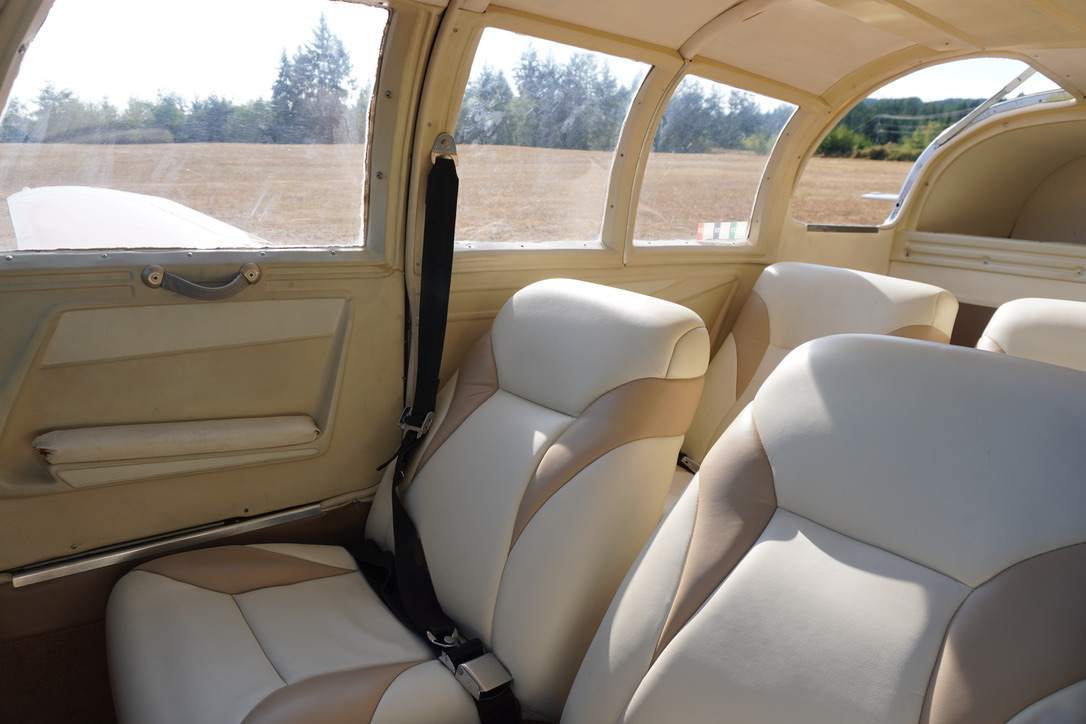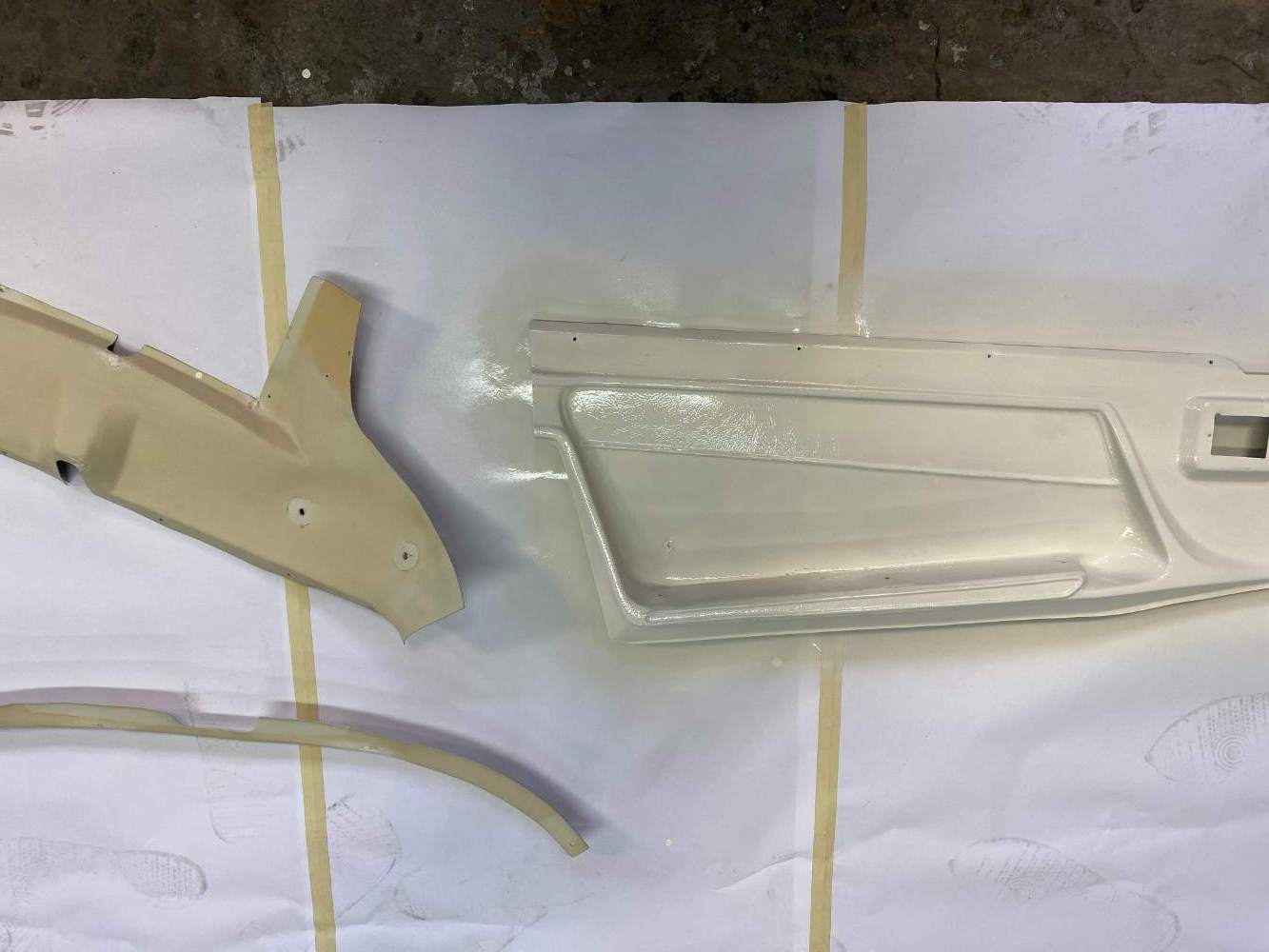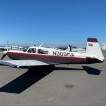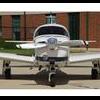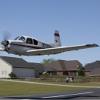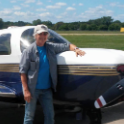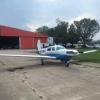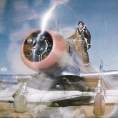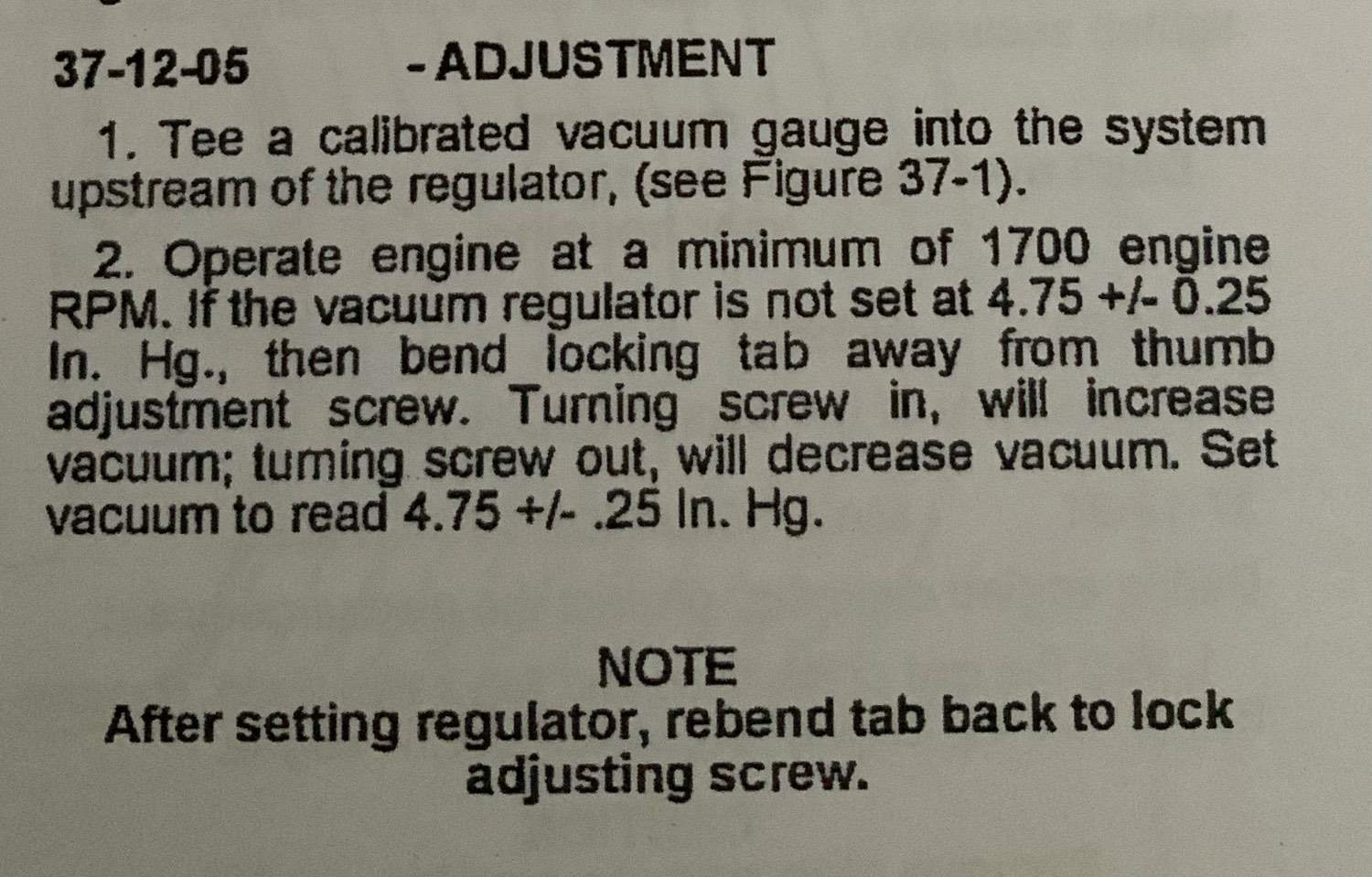Leaderboard
Popular Content
Showing content with the highest reputation on 12/25/2023 in all areas
-
4 points
-
I’m passing on shipping a container to Hector. He is very expensive, freight is expensive and then you have the variable costs and results of uninstalling and then reinstalling your own interior. I’m going to sub it out. There are thousands of interior and upholstery shops in the US. I found several locally who are MUCH less expensive and enthusiastic about the project. The Hector price tag of $25k was tough enough to swallow when it was a drop-it-and-done deal. Seats and carpet are coming out next week. Clean and inspect the interior. Ordered the foam and carpet already. Looking for leather. And, I can do the windows too if i want and still save money. Yes. It’s going to be work but getting held hostage in the GA market is getting tiresome. Less service for more money everywhere you look.3 points
-
According to the M20J Service Manual, for the Eaton style actuator, the distance between the ball screw barrel nut and the mechanical stop when the gear is down should be .050 - .100 inches. I'm not sure what that translates to in linear motion of the retraction rods -- depends on the mechanical advantage of the bell crank -- but I doubt the rods would get bent if everything were adjusted correctly and the down limit switch failed. The manual allows up to a 325 in-lb preload torque when the gear is electrically lowered (this is higher than the 250 - 280 in-lb when manually lowered to allow for some overrun). But, if it is true, as it appears to be, that there is no mechanical down stop on a Dukes actuator, then a failed down limit switch and resulting overrun would bottom out the bungee springs out at the gear wells. When setting up the gear, the starting preload on the springs is set by only two turns of the rod ends on the retraction tubes -- not much linear distance. Skip3 points
-
Several have recommended that you call one of the Mooney Centers. Since Don Maxwell is only an hour away I would call him. I believe he will have a workable solution and it won’t include scrapping the plane. But in this case you must call. He has ways of sourcing parts well beyond our capabilities, but can’t help at all if you don’t call. Mooneyspace is a wonderful resource but in this case you need more.3 points
-
Merry Christmas! we took a short family flight to go look at the ski areas and see how the snow looks for some skiing on Wednesday!3 points
-
Please don't take any of this too seriously, but.... I already know both tanks worked before taking off, because they worked last flight. What happened while the plane was on the ground that would have caused it to work the previous time but not this time? If the answer is 'nothing' then you gain nothing. If the answer is 'something', then... What the heck are you doing to your plane? The thing is, there will be a first time that it fails. If we assume that there is a 0.0001% chance of failure any given time you use it, it's just as likely to fail in flight regardless of if you tested it before. If testing it before is good, why not test it twice? (Left, Right, then back to left)... You only tested it one direction if you just swap the one time! If testing it once is good, I should probably test it twice. If twice is good, more is better. To be extra safe, I should sit on the taxiway and swap fuel tanks until I run out of gas. If the selector valves have an average lifespan of 10,000 movements, and an average flight has 2 changes in flight, then by doing a fuel tank swap before each flight reduces the life span of your valve by 33%. If I landed and dropped off a passenger, should I test again before taking off again? What if I just did a stop-n-go? What if I stopped for lunch? What if I stopped, took a nap in the hangar and then took off again? What if I went home in the meantime to nap? How does the selector valve know if I went home or not? Seriously, I don't think there is single perfect answer here. Follow the regulations, evaluate the risks, and mitigate them until your mitigation costs and risk acceptance level are good for you.2 points
-
I’m suspicious of any filter that flows more air (increasing manifold pressure).2 points
-
The notion that it is necessary to reduce power to 60-65% to be safe for the engine when running LOP is an apparently widespread OWT. What the GAMI people actually teach is that if you keep the power at or under 65% you can run the engine anywhere you want, whether ROP, LOP or directly at peak. That is because the Internal Cylinder Pressure at 65% is low enough at any power setting that it will not harm the cylinders. It is no more “unsafe” to run at 70 or 75% LOP than ROP so long as you run LOP enough, or ROP enough. And unless in very cold weather conditions you can generally determine if you are far enough ROP or LOP by cylinder temps, if they are at or under 380 dF you are good. The problem in a normally aspirated engine with trying to run, say, 75% LOP, is generally that you can’t generate sufficient manifold pressure at cruise altitude. The problem in a turbo is that temps, particularly Turbine Inlet Temp, will rise too high in the higher altitudes, because the air is thin and does not cool well and because the turbo is having to work harder to keep the manifold pressure high enough. At 70% power the GAMI people suggest running at least 125 ROP or 20 LOP. At 75% at least 175 ROP or 40 LOP, and 40 LOP is about as far as most engines can go without running rough, some less than that. I have used their 70% guidance in my turbo 360 for some time with nothing but good results. All this assumes that you are following their guidance to use a good engine monitor that reads out the EGTs of each of the multiple cylinders, so that the cylinder closest to peak is the one that is used to measure degrees ROP or LOP.2 points
-
2 points
-
Happiest of Holidays to everybody! From ten years ago, in case you're bored:2 points
-
2 points
-
Just my opinion but an aluminum glare shield sounds too likely to result in a fatal injury in an off field landing. I wouldn’t want one. Sent from my iPhone using Tapatalk2 points
-
I purchased my '67F N9611M a few years ago and have flown the pants off of it, going from my home base of Mexico City to Airventure (2x), Victoria BC (6x), the Caribbean, lots of places all around the western US and all the way up to Yellowknife NWT via Saskatchewan. I've flown N9611M over 650 hours and that means I've spent a bit more than that inside of her. As cozy as she is, she was in need of a little help. While the seats, carpet, and lower upholstered panels were re-done by the previous owner, they left the plastics as-is, cracked in some places, ruptured screw holes in many places, and a general yellowing effect which didn't look great with the brighter upholstery. Below is a photo of the original interior: As you can see, the previous owner decided to leave the original upholstery on the arm-rests and the "vintage" plastic panels look a little dated. Frankly, had the panels been structurally sound I probably wouldn't have touched them but hours of long x-country flying had taken their toll on the arm rest seams and from time to time my elbows would get pinched from the open seams. I also had a theory, still to be tested, that the panels in their condition were letting a bit more noise into the cockpit than originally intended. With all this in mind, a couple of months ago I began the process of disassembling the interior of the aircraft in order to move all of the pieces to my workshop and begin the restoration process. This was the second time I had removed some of the interior, the first being during my pre-buy, but this interior removal was certainly more thorough and involved more electrical connections and visits to Mooneyspace to figure out how to get those darn circular vents off. The de-install went well and I found an airframe still with zero corrosion and only mildly decaying foam fiberglass insulation and foam, generally in pretty good shape for an old bird! Once at my workshop, I surveyed the damage and found that there were three intact panels in total, all window frames, and the rest had some form of cracks, punctures, or other deformations with the worst offenders being the footwell side plastics, the ceiling panel, the door, and the pilots side lower panel. In my research, I had found that there were two main schools of thought when repairing and re-beautifying the panels. One, was to follow the Aero-Comfort system of reinforcing the panels and then covering with a fabric or leather. I had spoken to Hector a couple of times and was impressed with their product and found him to be knowledgeable and helpful, however I really enjoy my 1000lb+ useful load and wanted to add as little weight to the aircraft as possible. While super-lightweight coverings do exist, and would have solved another problem with the window joins (which I'll get to later), the weight consideration, getting FAA approved products into Mexico, and cost all played a factor in deciding to restore the panels via option two. Option two, which I went with, was to fix the panels from behind, and then paint. The trick would be to figure out how to fix them so that they wouldn't break again, at least not for a long time, and then how to paint them in both a color and sheen which fit with the existing upholstery scheme. First thing to figure out was what material we were working with. According to the manufacturer, Spartech, it's ABS plastic. Yes, there are some special mixes and flame retardant elements in there but it's ABS. The next thing to figure out was the best way to repair ABS plastic. After exhausting the interior plastics threads here on Mooneyspace which all offered different options for plastics reinforcement including glue, fiberglass, and tape(!) solutions, I turned elsewhere for inspiration and found it in a lovely video from an Australian gentleman. It seems that the best way to reinforce ABS plastic is with ABS plastic! Being in Mexico City, it can be difficult to acquire the right, certified materials for any job and while they do exist, proper caution is wise. Case in point, after visiting a construction market to purchase ABS welding rods, I tested the rods and found that they were smoking considerably on a piece of test material. When I returned to the market to ask the vendor about the product he'd sold me, he confessed it wasn't pure ABS and instead had a PVC mix at somewhere around 15% which was causing the smoking and would have resulted in an inferior repair. I had read somewhere that Lego blocks are manufactured out of 100% pure ABS plastic, and so went off on a hunt to dig up some white Legos. Luckily, Mexico City has a lot of Lego and just around the corner from my house was a Lego seller with several 40 gallon drums filled with used Legos, sorted by color. Scoop! After bringing back the legos and verifying with a test piece, I started to weld the panels back together. Some photos below showing the extent of the welding pre-sanding. Below you'll see a before and after sanding of a hole repair. And a couple of shots of the footwell panels which were quite damaged from years and years of use. Special note: these panels were especially de-formed and I was able to straighten them using a heat-gun on the low setting before then welding them. I'm not sure how to post my own videos here but I have some nice ones of shaking the panels and flexing them to try to break them again and they're flexible and strong as can be expected. The only time I managed to re-break one was when I flexed it on a non-sanded weld. Maybe it was the thicker plastic section hitting the thinner section at an angle? With all of the panels welded and sanded, it was now time for paint. I chose an oyster white to soften the appearance of the interior and went to work. In the first picture, you can see the difference in color between the yellowed original panel, the original color seen where the strap covers had blocked UV exposure, and one coat of the new color. And below is all of the panels laid out for painting, with the floor panels in the bottom left playing around with colors. After rattle-can coats of paint on each panel, they were ready for install, and yesterday I went out to the plane to begin assembly. I'm re-doing the headliner but have been itching to fly so thought I'd put together the plane to see how things look before final assembly. And once again, the before picture for reference. Installed, the panels look very good. There are a couple of paint imperfections, mostly in deep corners, and I think a better paint product (or maybe more skill on the part of me, the painter) would have solved this issue. That's where I've gotten for now, next up is: headliner and ceiling panel install de-install of the panels to upholster the arm rests with the same material as the seats install of freshly painted passenger headphone jack covers (more on that next time) sourcing and install of those thin window joining strips I'm looking for help with adhesives recommendations for both foam to aluminum and foam to vinyl, as well as if anyone knows where to find those little strips which go between the windows?1 point
-
1 point
-
It depends on what kind of buyer you find. Some folks are looking for a solid airplane they can upgrade the way they want it, and this would probably be your best case if the airplane is mechanically excellent. No effort required by you other than putting it on the market at a fair price. Other folks are looking for a "turn-key" purchase which you may or may not have, depending on the mechanical condition and what's in the panel, by upgrading the interior yourself. This is more difficult in several ways, because every airplane these folks look at is "not quite right" in some way and your sale would be competing with airplanes that have a better this or that. With interiors and paint you run the risk of upgrading to something a potential buyer won't like, although this is less of a risk with a properly well done interior. The new interior would be a plus and get some folks to look more closely but may not be enough to seal the deal. If the paint isn't a good "10 foot" condition a professional quality touch-up wouldn't hurt but may not help significantly if the whole airplane looks aged and in need of some attention. 25 years is a long time for aircraft paint. It sounds like you have an idea of what you'd like to get for the airplane. How does that align with the market value as is? Anything you spend on it now will only marginally be returned to you in increased value, so I'd make the decision on how much you're willing to spend to sell the airplane and base your upgrade decisions on what you can do for that amount. Cheers, Rick1 point
-
In our case, in the corporate jet side of things, the cost of the hangar construction has been paid for three fold in just the fuel cost savings alone over the last 20 years. Not to mention what we would have paid to rent the hangar space to store the airplanes. Building (corporate) hangars is a license to print money relative to renting space and paying "tenant" fuel rates. Obviously this is different for light GA owners. But they own the land. It is what it is. Something I tell my bosses from time to time about our jets and it applies equally to Mooneys: Airplanes are expensive. Either you can afford them or you can't.1 point
-
1 point
-
@FLYFST here is a great thread about various pulsing installs: I purchased a Max Pulse from @OSUAV8TER and waiting to have it installed in the headliner ala @GeeBee. as an aside…aren’t ring terminals (the ones linked in previous post) the way to go for aviation rather than spade connectors. Curious why they offer both?1 point
-
I recommend the MaxPulse switch. https://www.gallagheraviationllc.com/MaxPulse-9200-000-B-Ring-Terminal-Switch_p_266.html1 point
-
Hey, Merry Christmas everyone. We can argue about engine management again tomorrow, today is a day for rest, good cheer and a little egg nog.1 point
-
1 point
-
1 point
-
There have been cases where the insurance company rejected an offer from plaintiffs attorneys to settle for policy limits, and subsequently resulting in a jury verdict in excess of policy limits. The insured ends up on the hook for the excess ( and a potential claim for insurance bad faith against the insurance company). If sued, you might want to hire an independent attorney, not just solely rely on the attorney hired by the insurance company to defend against the lawsuit.1 point
-
The heading should track the heading easily within a couple of degrees. Each system can be used independently or together. A well set up system will track as well as most modern autopilots. Kevin Westbrook @Kevin Westbrookwho used to work at Brittain frequents the site or PM me next week and we can talk you through proper operation.1 point
-
@LANCECASPER CHT’s were somewhere in the mid to high 300’s (still rocking the stock CHT gauge, GI275 scheduled for install in January) TIT were sitting between 1530-1550. At 16,000 about 1500 at 13,000 Not sure how far LOP I was, as I do the “big pull” then verify I’m lean of peak by enriching to make sure TIT rises then pulling back to where I wanted to be at.1 point
-
It’s a very fine line between compressing the springs to get the required pre-load and fully compressing the springs. I recall the MM calling for 1/4 to 3/8” gap in adjusting the mechanical down stop. That’s a big enough gap that when the limit switch fails it could still fully compress the springs and bow a tube. Because of the geometry, the left tube will be first to bow so you won’t necessarily loose both tubes. plus limit switches don’t necessarily fail completely but may require further throw and pressure to close. Sent from my iPhone using Tapatalk1 point
-
There seems to have always been a mechanical up stop. The mechanical down stop seems to be a feature added to the Eaton actuator. Not sure about the Plessey. The Dukes doesn’t appear to have a mechanical down stop. So I guess if the down limit switch fails, you get bent tubes.1 point
-
That gives you an idea of what's gonna give if the motor doesn't stop. I wonder now if the motor didn't stop because the paddle was displaced or the paddle got displaced because the motor didn't stop. Also, that's a mighty fine-lookin' emergency gear cable you got there.1 point
-
For frivolous or marginal lawsuits the ambulance chasers will absolutely drop the lower limits like a hot potato. higher limits, higher net worth, or an airtight case of negligence is not so easy. just remember, your insurance is not your friend either way. Their only mission is to pay as little as possible in every instance.1 point
-
Little more data for anyone curious. M20K no intercooler no merlyn 4+29 hour take off to touchdown 16,000’ started at 165KTAS finished 175KTAS Total trip burn was 50.5 gallons. Was leaned to the mid 10GPH range in cruise. 4+36 T/O to Touchdown 13,000’ 155-160 KTAS. Total leg burn 51.7 gallons, same leaned to mid 10GPH range in cruise. Fuel burn was measured at the pumps by topping the plane back off. Reason I say mid 10GPH range is my fuel flow bounces a little bit in cruise .3 of a gallon or so.1 point
-
Yes, the typical ground lease gives the lessor the right to keep the improvements.1 point
-
I’m based at a privately owned public use airport (W28) in Sequim, WA. The 20 unit T hanger building was built in the mid 1980s. In 1997 the airport owner condominiumized the units, with a 40 year lease term. The lease states that at the end of the lease term, ownership of the building reverts to the airport. Some of the owners have recently started to express concerns as the 40 year term expires in about 13 years. They expect the airport to negotiate a lease extension, however, the Airport plans to take back ownership, and then enter into separate leases with the hanger occupants. I can’t complain at all, as I drafted the condominium declaration and lease agreement for the airport owner. I currently own one of the condominium hangers. The original units sold for $19,500. The most recent sales are between 60 and 65,000.1 point
-
I've been looking at powered towbars and I've seen some power towbar/mini tugs that you place the tail wheel on and move the plane around. Regretfully I couldn't find it again on a quick search, but they are out there. When I run across it again I'll post the info (if someone else hasn't already or you find it yourself).1 point
-
It's probably a combination. Low limits but high net worth? They're probably coming for you anyway.1 point
-
Be a good brother-in-law David, get him a Redline Sidewinder tug . . . . . attached to an M20J And then offer to fly it to keep it "exercised" as long as he covers insurance, hangar, maintenance and all fuel1 point
-
I still wish someone would post the name of the new decision, if there is one. I have a real estate law practice and have spent some time in this area. The FAA opinions are often necessary to share with the airport authority to get them to allow development. You may be dealing with a small group of city council members who are not experienced with complicated commercial ground leases. Their attorney may have never seen the issue either. When approached by someone who wants to build a hangar, they may think they need to "negotiate strongly" and insist on short-term leases and high ground rents that make it impossible to build economically. They tend to quickly forget they're getting an improvement that should last 100+ years built at their airport at no cost to them. Lately I've been seeing some airport authorities push back for any lease terms beyond 20 years. I've had an "aerospace engineer" tell me the FAA requires payment of "fair market value" for ground rent, to the tune of several thousand dollars per year, under a building built by the tenant (they do not, it says so right in the FAA's published guidelines). This type of thing is really holding aviation back and is the reason so many airports have vacant land sitting there unused while pilots have trouble finding hangar space. This is one area of aviation law where I can say the FAA really helps the pilots. All their guidance basically says, don't give the ground away, but otherwise, let people build hangars and they don't want to get involved, other than approving the location and height to make sure it's not an obstacle to takeoffs and landings. The Part 16 enforcement cases I've seen even all make sense - they will get involved if the airport is leasing ground to non-aviation businesses when there are aviation businesses who want the space. The email quoted above sounds like this decision would be another good decision for pilots wanting to build hangars. But you can't really rely on someone else's summary of an opinion.1 point
-
And that folks is the bottom line with element filters. You only get one choose wisely.1 point
-
Oh, and you actually can get better filtration and better flow, by fitting significantly larger as in area filter, but as we can’t it’s one or the other. ‘Aircraft are a lot like boats, most of the time we operate is pretty clean environments, unless you fly off of a dirt strip or something it’s not that big of a deal usually.1 point
-
Hi all, What an excellent resource for Mooney research! My name is Eric Williams and I have been watching the Mooney market for quite some time now. A little bit about myself, I'm an aviation enthusiast and professional pilot by trade, currently chief pilot of a three aircraft corporate flight department in Houston, Texas. My father taught me how to fly and owned a couple aircraft over the years (172 and twin Comanche), I've been isolated from the light GA and single engine piston world for roughly 5 years now with a few exceptions. Over that time frame I've really started to miss that side of aviation and have justified the necessity of ownership so here I am. While I do not directly have any Mooney experience I've always been interested in the airframes because of the pilots appeal, speed, and efficiency. I've been searching through this forum and have found several similar posts and lots of great model comparison and operational notes so I'll try my best not to beat a dead horse. Below is the cliff notes on my mission, my sense is that a J model or Ovation is the most sensible option. If anyone has any input or wouldn't mind fielding some questions over the phone that would be great. I would love to meet or speak with other Texas based Mooney owners about their experience and how they came to their decision in terms of aircraft selection. Planned Annual Utilization: 80-110hours Home Airport 60R Navasota 10% Local flying for fun or $100 hamburger 1-3pax onboard less than 100nm 50% short haul cross country 150-300nm(most frequently between Houston and South or Central Texas) often solo 40% mid to long haul cross country 400-800nm this is where the mission profile is more demanding. These legs would be a mix of the Florida panhandle, Tennessee, deep West Texas(big bend country), and some southern Colorado/New Mexico. The Colorado/New Mexico trips would almost always be 1-2 pax tops as these would likely be short summer vacations or hunting trips. The Florida trips would almost always be 4 adults or 3 adults and one child(currently 3yo). Everyone in my family is small, I'm about 5'7" 140lbs and that's probably a good average pax weight. We all pack light although I am curious how difficult it would be to carry rifles and hunting gear for 2. I've noticed not all models have removeable rear seats. A strong IFR platform is a must although I've flown in enough shit weather in my life I don't intend to fly regularly in widespread low imc or night imc conditions as my schedule will likely be flexible enough to avoid it. Thanks in advance for comments, advice, and future problem solving. Please feel free to reach out with any recommendations in the shopping experience, I would also like to find a local Mooney CFI with a fair amount of J model and ovation experience. Regards, Eric Williams1 point
-
Other than the modern fiberglass interior, starting with Ser. no. 24-3374, which replaced the cheap flimsy, (brittle over time), "Royalite" ABS interior panels and foam sound deadening material replacing cheap fluff fiber glass insulation, can you explain how they got heavier? Yes some later ones came with the highly sought after fully adjustable (and heavier) pilot seats with arm rests. But same engine, same steel frame, same skins, same tires. We have all replaced the fluff insulation with more substantial sound deadening foam. Later models came from the factory with more (heavier) avionics, and yes there are some out there for sale with practically original panels, but as owners upgrade avionics over time all the planes become lighter and more similar. A 160 lb. GW improvement is a real improvement. That said, it is basically a "paper" improvement. All Mooney's built in the last 60 years fly on and are lifted by the same wing (same airfoil, same area, same lift). They are all are suspended on the ground with the same exact shock discs in the landing gear. Yet GW went from 2,450 lbs to 3,380 lbs. The only fundamental difference is the power used to propel the plane. I have pointed out previously that Rocket Engineering, got the FAA to certify that the earlier J's with the 2 thinner steel tubes, could be certified to 3,200 lbs. GW in the Missile conversion, without any structural modification. On trips I fly at 3,200 lbs in the same airframe that I was previously limited to 2,740 lbs. No Missile has ever had a structural issue.1 point
-
The later J models had a small modification that allowed the GW to increase to 2,900 lbs from 2,740 lbs. All Serial Numbers 24-1686 and above had 2 tubes in the side of the steel cage with a slightly greater wall thickness (.049 vs .035) M20J Serial Number 24-3057 and above are certified at 2,900 lbs. GW M20J Serial Number 24-1686 through 24-3056 can be certified via STC (basically 1988 and newer) https://mooneyspace.com/applications/core/interface/file/attachment.php?id=95270 It basically involves relabeling the ASI, checking the balance of your rudder and POH additions. For your mission look for 1988 or newer. Many will already have the GW increase STC.1 point
-
I feel the same as Flash about my J. It does so much so well, and is so economical I never worry about a trip cost. I have done 4 adults on a weekend trip a few times with light baggage, and up to 500 miles (~3.x hours) with partial fuel and it works fine if you pack carefully and don't have obese folks. (I was 25-30 lbs lighter then myself. ) I don't like to subject pax to more than 3 hours at a time anyway, so carrying 42 or 44 gallons or whatever works is just fine, provided you have good fuel gages and/or a totalizer! Having said that, there have been times bucking a big headwind that I think that an Ovation would be nice, but then I think about +5-7 GPH and +100k on purchase price and I'm content again.1 point
-
There have been times I would have liked to have something that could climb higher/go faster than my M20J, but it has gotten me everywhere I have wanted to go so far in 24 years of ownership, to every state but Hawaii and to 20 countries. It is an excellent IFR platform, especially with a good autopilot to relieve workload. Your mission profile seems like a very good fit for an M20J's strengths, with the possible exception of carrying four adults from Texas to Florida, which even with small adults might be a bit of a squeeze for a trip of that duration. (Disclaimers: I have carried four adults for short trips. I have never sat in the back seat of my plane when it was in the air.)1 point
-
All of that, plus two humans and a dog went in there! Sent from my motorola edge plus 2023 using Tapatalk1 point
-
Welcome onto the forum. A lot of your mission fits a M20J. But then there are a few issues. Years ago, when we we were a lightweight family like yours also based in the Houston area, we had a similar mission and bought our M20J. Trips to Central TX hill country, South TX South Padre, Florida panhandle, Destin, all with seats filled worked well We also frequently took trips to New Mexico with seats filled - the plane was adequate but density altitude planning always critical, especially in the summer. I elected to have the Rocket Engineering "Missile" STC which added an IO-550. This gave it Ovation like performance which better handles flying in New Mexico and Colorado. Just about any Mooney with the right avionics is a "strong IFR platform". Ours does not have split/removable rear seats - that was a feature starting in 1982 Skip posted this link https://mooneyspace.com/applications/core/interface/file/attachment.php?id=128630&key=679a9d65c36d11a698921a4cea2a60b3 You mention "2 pax plus rifles" - that sounds like you might benefit from the greater backseat and luggage space (length) in a Long Body. You could take one seat out and lay the guns down. You said "don't intend to fly regularly in widespread low imc or night imc" I am not sure if you meant you need to be able to handle all kinds of weather conditions "occasionally". If you need FIKI and need to get over some weather in the lower Flight Levels, then that changes things - it narrows your options. You would need a Bravo M20M or Acclaim M20TN. I think there are a few Encore M20K with FIKI but they are scarce and weak on UL And last, since you are based in Houston you didn't mention Air Conditioning. Perhaps your past GA experiences were here and you have already factored long IFR releases in during hot humid nearly unbearable weather. I manage without A/C by loading/fuel/preflight and keeping it out of the sun in the hangar before family arrives. Just my experience.1 point
-
Welcome! You've got it narrowed down correctly, IMO. I've got an early J and it is good enough for me to not feel like I have or will "outgrow" it and want a bigger-engined Mooney. I do intend to eventually add a turbo-normalizer (long story, and I'm far from normal!) instead of trading-up to a factory turbo. A J, especially 1982 or newer to get the rear bucket seats, will do your missions just fine, but if you're truly flying a lot of 800 NM trips, then you'll long for an Ovation, especially flying west into typical headwinds. Rifles and hunting gear will be no problem in either plane, especially with back seats out. I've carried 2 29er mountain bikes (wheels off, though), camping gear, and a 40 lb dog in my J from KS to WA. You didn't mention budget... most J's are older than 1994, and all Ovations are 1994 or newer, and that comes with a big difference in acquisition price. I don't think you'd be disappointed with whatever you choose, but the best advice is buy the best example you can get, and as closely equipped as you might wish. Everything except rampant corrosion is "fixable" if you apply enough time and money.1 point
-
1 point
-
The LED recognition lights are 15% off through Friday, December 8th. You need to select the voltage for the LED recognition lights that corresponds with your ship electrical power. I know that for the 28V Mooneys there is a resistor that drops the power but you still need the 28V lamps. Links are below. https://www.gallagheraviationllc.com/WAT-Mooney-28V-Recognition-Light_p_337.html <-- 28V Mooney LED Recognition Lights https://www.gallagheraviationllc.com/WAT-Mooney-14V-Recognition-Light_p_140.html <--14V Mooney LED Recognition Lights1 point
-
There are some advantages to the set up. Since it is a rate based autopilot, if you have an AHARs failure, and have to fly on the standby attitude, the autopilot still works. Some don't see that as a big deal, but I see it as a great safety feature. I wish Garmin would allow attitude switching for the GFC 700 so you have an autopilot if the primary AHARS fails. That all said, according to Jonny the factory is looking at an NXi upgrade which would include a GFC700 autopilot for the STec airplanes. So personally, I would not hesitate to buy an Stec equipped G1000 unit because either the factory or Garmin is going to get it done at some point.1 point
-
Another cute variation I just recieved by email Twas the night before Christmas, and out on the ramp, Not an airplane was stirring, not even a Champ. The aircraft were fastened to tie downs with care, In hopes that -- come morning -- they all would be there. The fuel trucks were nestled, all snug in their spots, With gusts from two-forty at 39 knots. I slumped at the fuel desk, now finally caught up, And settled down comfortably, resting my butt. When the radio lit up with noise and with chatter, I turned up the scanner to see what was the matter. A voice clearly heard over static and snow, Called for clearance to land at the airport below. He barked his transmission so lively and quick, I'd have sworn that the call sign he used was "St. Nick." I ran to the panel to turn up the lights, The better to welcome this magical flight. He called his position, no room for denial, "St. Nicholas One, turnin' left onto final." And what to my wondering eyes should appear, But a Rutan-built sleigh, with eight Rotax Reindeer! With vectors to final, down the glideslope he came, As he passed all fixes, he called them by name: "Now Ringo! Now Tolga! Now Trini and Bacun! On Comet! On Cupid!" What pills was he takin'? While controllers were sittin', and scratchin their heads, They phoned to my office, and I heard it with dread, The message they left was both urgent and dour: "When Santa pulls in, have him please call the tower." He landed like silk, with the sled runners sparking, Then I heard, "Left at Charlie," and "Taxi to parking." He slowed to a taxi, turned off of three-oh, And stopped on the ramp with a "Ho! Ho! Ho!" He stepped out of the sleigh, but before he could talk, I ran out to meet him with my best set of chocks. His red helmet and goggles were covered with frost, And his beard was all blackened from Reindeer exhaust. His breath smelled like peppermint, gone slightly stale, And he puffed on a pipe, but he didn't inhale. His cheeks were all rosy and jiggled like jelly, His boots were as black as a cropduster's belly. He was chubby and plump, in his suit of bright red, And he asked me to "fill it, with hundred low-lead." He came dashing in from the snow-covered pump, I knew he was anxious for drainin' the sump. I spoke not a word, but went straight to my work, And I filled up the sleigh, but I spilled like a jerk. He came out of the restroom, and sighed in relief, Then he picked up a phone for a Flight Service brief. And I thought as he silently scribed in his log, These reindeer could land in an eighth-mile fog. He completed his pre-flight, from the front to the rear, Then he put on his headset, and I heard him yell, "Clear!" And laying a finger on his push-to-talk, He called up the tower for clearance and squawk. "Take taxiway Charlie, the southbound direction, Turn right three-two-zero at pilot's discretion" He sped down the runway, the best of the best, "Your traffic's a Grumman, inbound from the west." Then I heard him proclaim, as he climbed through the night, "Merry Christmas to all! I have traffic in sight.1 point


